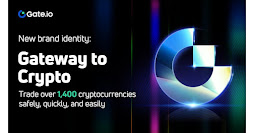Connecting the Blockchain Ecosystem – An Introduction to the Polkadot (DOT) Project
Connecting the Blockchain Ecosystem – An Introduction to the Polkadot (DOT) Project Blockchain technology has revolutionized the world of finance and beyond by providing secure, transparent, and decentralized solutions to traditional problems. However, with hundreds of different blockchain networks operating independently, there is a need for greater connectivity and interoperability between these networks. Enter Polkadot (DOT), a next-generation blockchain project that aims to connect all blockchain networks into a single unified ecosystem. What is Polkadot? Polkadot is a project founded by Dr. Gavin Wood, one of the co-founders of Ethereum. It is a sharded multichain network that connects multiple specialized blockchains known as parachains into a single, interoperable network. By linking together different blockchains, Polkadot enables cross-chain communication, interoperability, and shared security guarantees. How does Polkadot work? At its core, Polkadot uses a unique cons...
